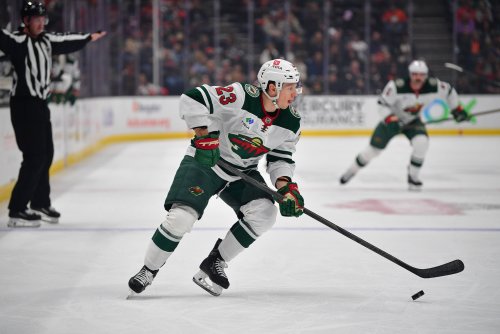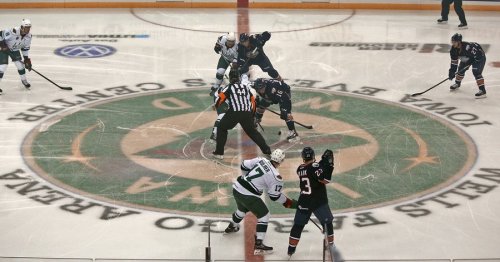
The Minnesota Wild have been on a tear, and are now second in the Central division with a game in hand on the next team down. Expectations of this success was, perhaps, not as rampant as it has been in years past. Combine that with what some could have called a slow start, and I was wondering what was behind the Wild’s winning ways?
At first, my thought was that the Wild must be controlling play and simply out-shooting teams.... this is a half-truth which I will cover more later. Suffice for now to say that the Wild are in the bottom third of the league in Shot Attempts %. In other words, the other team is likely spending more time attacking than the Wild are.
Perhaps, I thought, it was depth scoring? A long-time complaint of Wild faithful is the lack of a true star, a game-breaking player who can put the team on his back. After all, the Wild have only two players without a goal on the season (Nino Niederreiter and Greg Pateryn), and only Pateryn is pointless on the season. While other teams perhaps don’t have that wide a spread on their scoring, it still doesn’t explain the Wild’s success compared to the teams below them.
Looking back at the concept of “controlling the game”- an interesting tidbit. While the Wild are bottom-10 in the league in terms of controlling the percentage of shot attempts, in both percentage of shots controlled and percentage of scoring chances controlled, the Wild are in the top 10 in the league. Put another way: while the Wild are allowing opponents to shoot the puck at the net, those shots either aren’t hitting the net or aren’t particularly good scoring chances, while the Wild are hitting the target with their shots and are creating good scoring chances for themselves.
There are two keys to this for the Wild, and one will demonstrate the other.
The Blue Line
The defensive corps for the Wild has been, thus far, fantastic. While you would expect the bottom pairing to be the weakest defensively speaking, that has not been the case. The worst three players in terms of controlling play are forwards (JT Brown, Matt Hendricks, and Jordan Greenway). The first defensemen you get to are Jared Spurgeon and Jonas Brodin. This is perhaps expected, as the two often face the toughest opponents of the defensive corps. Still, it’s not uncommon to see lower-pairing defenseman at the bottom of the shot attempt chart.
In fact, the best three blue liners at controlling shot attempts are Greg Pateryn, Nick Seeler, and Matt Dumba. Seeler and Dumba are in the top-10 of the league in controlling play, while Pateryn falls just outside the top 10 at 11. In other words, the Wild’s bottom pairing have (albeit while playing against the easier lines) been some of the better players for the Wild at suppressing shot attempts while also generating offense. (all stats from Natural Stat Trick)
How is the blue line accomplishing this? It’s fairly simple: force the opposition to take bad shots.
Shot Suppression
The Wild have been one of the best teams in the league at clearing out the goalmouth and forcing long shots from wide angles.
Most teams shots-allowed chart looks like this (red shading=more shots, blue=fewer shots).
Notice the big red area next to the goal at the bottom? That’s prime-time scoring opportunities. Colorado also has been vulnerable to teams shooting from the middle of the ice above the circles, and from the left circle and right point. If I were a Colorado coach, I would be working with my blue liners to clear the net. Now look at Minnesota’s:
The red area by the net is almost nonexistent, and frankly there are few shots being taken anywhere from closer than the outer edge of the right circle. Minnesota is clearing the net front very effectively, and forcing teams to shoot from near the blue line, giving Dubnyk (or Stalock) plenty of time to read and save the shot.
Minnesota’s forwards are certainly assisting here, but the big emphasis has to be on the net front: Minnesota’s defenders haven’t allowed any shots from that real estate and if they can continue to prevent those shots, Minnesota will continue to be defensively stable.
If I am Minnesota’s coach, I’m telling the Wild to continue with more of the same on defense: force the shots to be from distance, and trust your goalie to save them.
Think you could write a story like this? Hockey Wilderness wants you to develop your voice, find an audience, and we'll pay you to do it. Just fill out this form.









Recommended Comments
There are no comments to display.
Join the conversation
You can post now and register later. If you have an account, sign in now to post with your account.
Note: Your post will require moderator approval before it will be visible.